Commas are used:
-
to separate clauses and phrases
-
to separate elements in a list
-
to address by name
-
for tag questions
-
for an interjection.
The first word following a comma is not capitalized.
To separate clauses or elements in a list
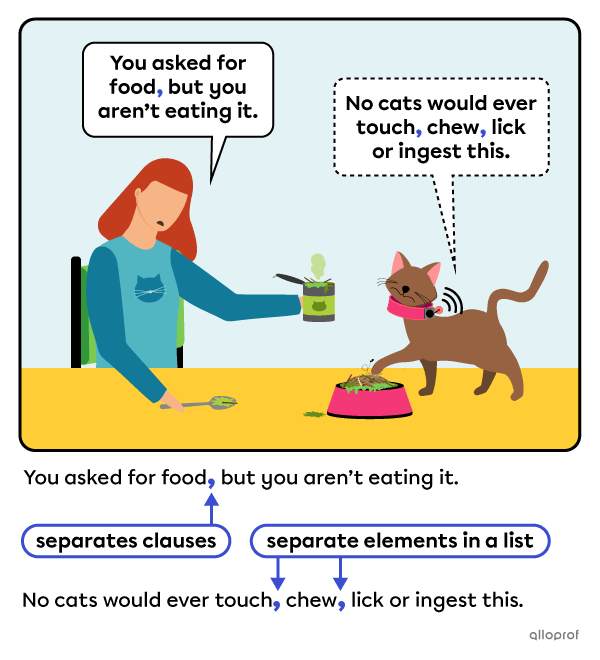
To address by name, for tag questions and interjections
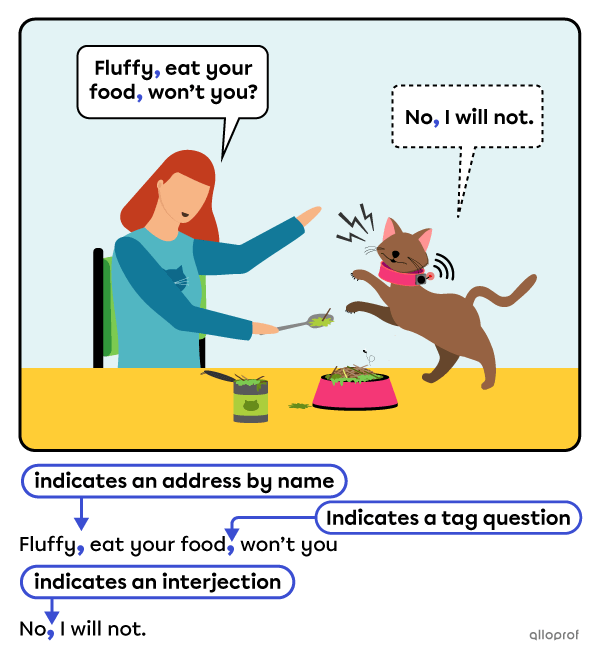
Comma placement can affect the meaning of a sentence.
With a comma: address by name
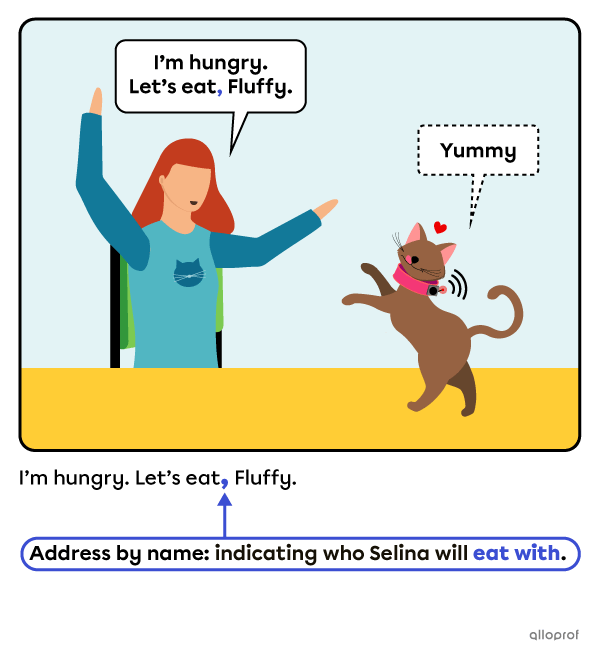
Without a comma: name becomes verb object
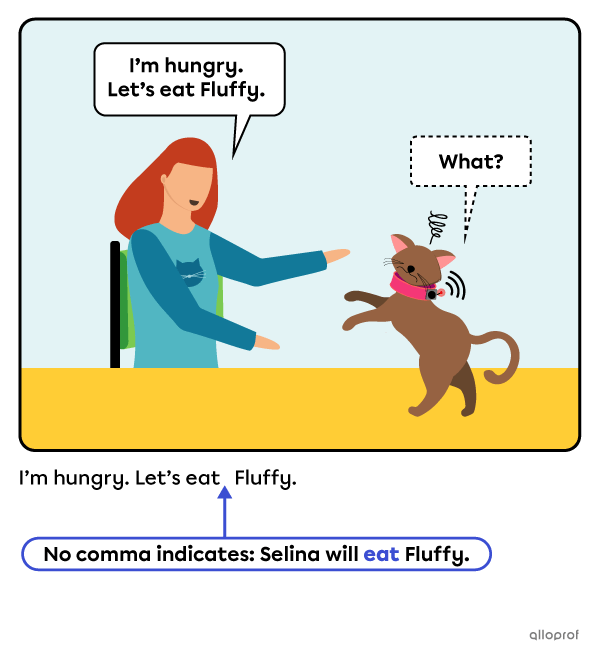
Commas are used when adding non-essential information to the meaning of a sentence.
The additional information, also called an appositive, is enclosed between two commas.
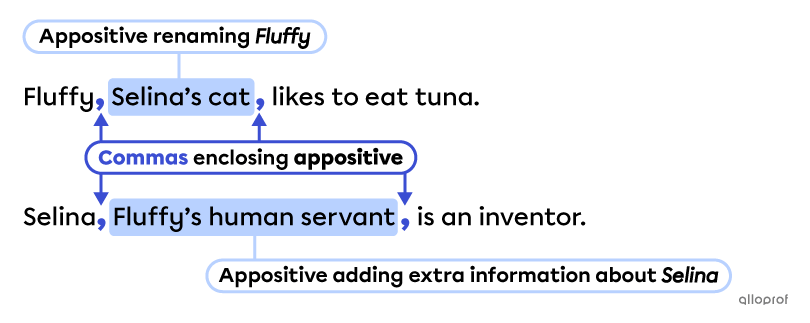
Commas are used in dates for a:
-
month/day/year sequence—comma before the year
-
weekday/month/day/year sequence—comma after the weekday
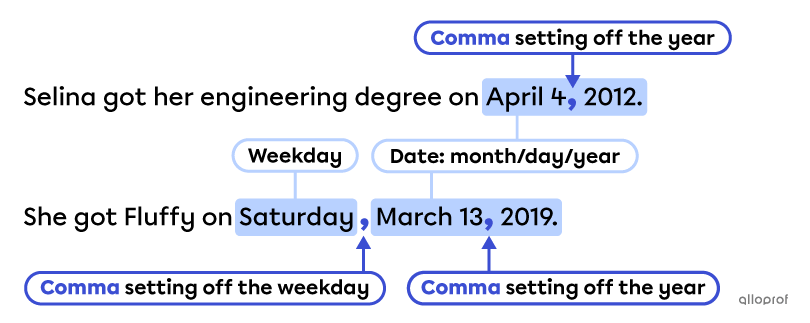
When writing a date in the day/month/year sequence, no commas are necessary. This is mostly used in British English.
For example:
Selina got her engineering degree on 4 April 2012.
Introductory phrases and clauses are used to give context to a sentence. They are generally followed by a comma.
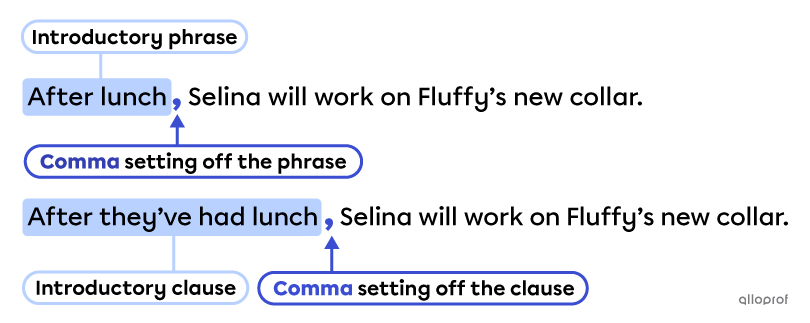
Sometimes, to express emotion, to give tone or indicate emphasis, the flow of a sentence is interrupted. In these cases, commas take a similar role to parentheses.
